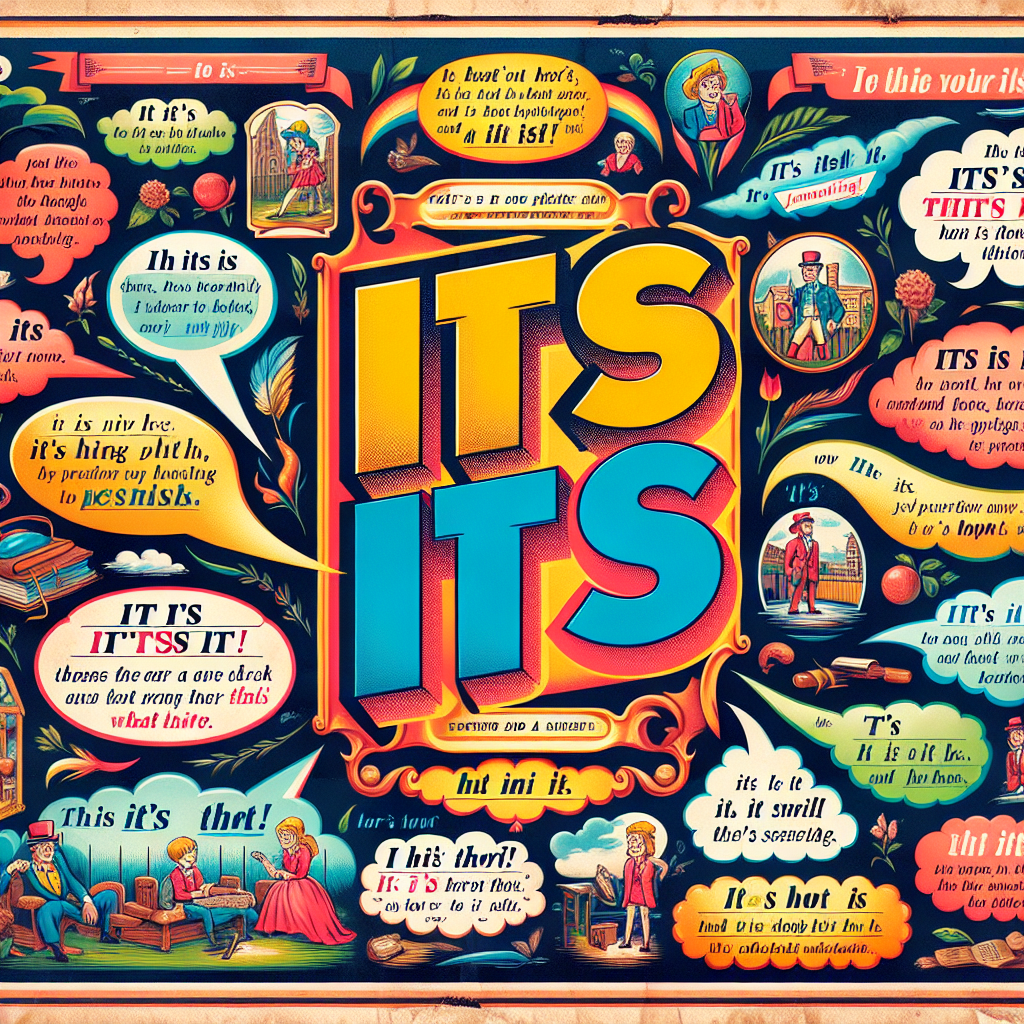Origin and Meaning of ‘its’ and ‘it’s’
Many English speakers find themselves perplexed by the difference between ‘its’ and ‘it’s’. These two words may seem nearly identical, but they have distinct meanings and origins. Let’s delve into the fascinating world of these commonly confused words.
Origin of ‘Its’
The word ‘its’ is a possessive pronoun, used to indicate that something belongs to or is associated with a thing previously mentioned. Its origin can be traced back to Middle English, where it was derived from the Old English word ‘hit’. Over time, the apostrophe was dropped, and the spelling was standardized to ‘its’.
In modern English, ‘its’ is used in sentences like “The dog wagged its tail” or “The company showcased its new product”. Remember, ‘its’ is possessive, so it indicates ownership or association with the subject.
Origin of ‘It’s’
On the other hand, ‘it’s’ is a contraction of ‘it is’ or ‘it has’. The apostrophe replaces the missing letters in the contraction, making it easier and faster to write and say in casual conversation. This usage originated in the 17th century, as contractions became more common in written English.
Examples of ‘it’s’ in sentences include “It’s raining outside” or “It’s been a long day”. In these cases, ‘it’s’ is a shortened form of ‘it is’ or ‘it has’.
Common Confusion
Despite the clear distinction in meaning between ‘its’ and ‘it’s’, many people still struggle with when to use each one. The key is to remember that ‘its’ is possessive, while ‘it’s’ is a contraction of ‘it is’ or ‘it has’.
One trick to remember the difference is to expand the contraction in your mind before using ‘it’s’. If you can say “it is” or “it has” in place of ‘it’s’ in the sentence, then you know you are using the correct form.
Usage in Writing
Properly using ‘its’ and ‘it’s’ in your writing can make a significant impact on the clarity and professionalism of your work. Incorrect usage can confuse readers and detract from your message.
Remember to proofread your writing carefully, paying special attention to these two words. If you are unsure, take a moment to double-check and ensure you are using the right form.
Conclusion
In conclusion, ‘its’ and ‘it’s’ may be similar in appearance, but they have distinct meanings and origins. Understanding the difference and applying it correctly in your writing can elevate the quality of your communication.
Next time you find yourself unsure whether to use ‘its’ or ‘it’s’, remember the tips and tricks outlined in this article. Practice makes perfect, and with time, you will become more comfortable with these commonly confused words.
For more tips on improving your writing skills, check out EditMojo for helpful resources and guides.
#Origin #meaning #ʼitsʼ #ʼitʼsʼ
